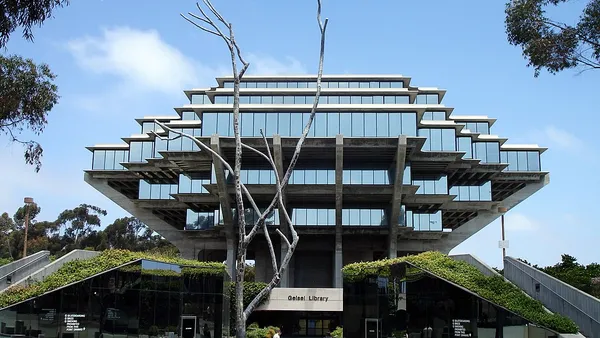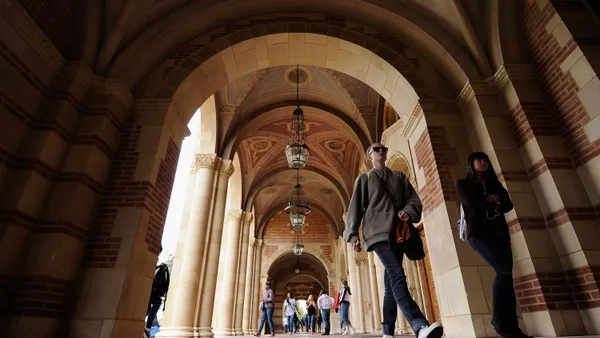Dive Brief:
- The University of Nebraska at Kearney will eliminate 24.5 faculty positions and nine academic degree programs to help mitigate an expected $4.3 million budgetary shortfall.
- A significant portion of faculty cuts will affect the theater, English and music departments, the university said in a Monday statement. Laid-off faculty will be notified by May, though some cuts are expected to come through voluntary buyouts or eliminating vacant positions.
- The cuts are projected to save the university $2.3 million. The system’s board of regents will have to approve the degree discontinuations.
Dive Insight:
Overall, the four-campus University of Nebraska system is projected to have a $58 million budget deficit by the end of the 2024-25 fiscal year. It’s one of several public college systems across the U.S. that are grappling with budgetary issues amid challenging demographic trends.
In June, University of Nebraska System President Ted Carter unveiled a plan to address the shortfall, laying out new student recruitment efforts and a goal to rejoin the Association of American Universities, a selective organization of research institutions. The system also froze hiring for nonfaculty positions in July.
UN-Kearney already enacted a hiring freeze prior to Monday's announcement. The campus saved roughly $4.1 million this academic year by leaving 77 full-time positions unfilled, officials said.
UN-Kearney has faced declining enrollment over the past decade.
The campus enrolled just over 6,000 students in fall 2023, down 0.4% from the previous year, according to system data. Overall, the system’s enrollment stayed mostly flat, falling 0.3% to around 49,419 students.
The newest round of cuts is expected to mitigate just over half of UN-Kearney's projected deficit.
“The university recognizes the need for ongoing fiscal responsibility, and these decisions are a result of careful analysis,” UN-Kearney Chancellor Doug Kristensen said in a statement. “While these reductions are a significant step, we are actively exploring additional cost-saving measures to ensure the long-term sustainability of our institution.”
The theater department is slated to see the most faculty cuts, with four positions on the chopping block. That’s followed by the English and music departments, which are each expected to lose at least three positions.
Four departments will lose two faculty each, and half a dozen will lose one position each.
UN-Kearney is also seeking to eliminate nine academic programs, including its entire geography department. Each of the flagged programs awarded seven degrees or fewer a year, the university said.
The bachelor’s degrees slated for elimination are:
- Business Intelligence Emphasis.
- Geography.
- Geography and GIScience.
- Geography 7-12 Teaching Subject Endorsement.
- Musical Theater.
- Recreation Management.
- Recreation, Outdoor and Event Management.
- Theater.
Campus leaders will present the recommendations to the system president in early December. Students currently enrolled in affected programs will still be able to fulfill their graduation requirements.
Earlier this month, UN-Kearny's chapter of the National Education Association, a union representing faculty and educators, blasted state officials for what they described as disinvestment in public higher education.
"Through decades of financial cuts, the state government is forcing our university system to collapse into a more limited version of its former self — yet it will be even more expensive for its students, who will shoulder more and more of the cost," the union said in a joint statement with the American Association of University Professors chapters at UN-Lincoln and UN-Omaha.
"The government is now starving the state of educational opportunities and economic development that an adequately funded state university offers children and communities," it said.
However, data from the State Higher Education Executive Officers Association shows Nebraska increased its per-student funding from $8,729 in 2012 to $11,236 in 2022 when adjusted for inflation, beating the national average.















